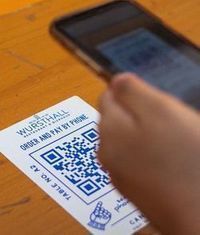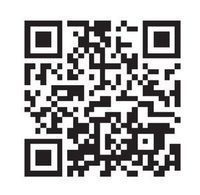
How Your Company Can Use QR Codes to Gain New Business
Are you looking for a great way to promote your company and products? QR codes allow your customers and prospects with a smartphone or tablet camera (and a QR reader app) to take a picture of your QR code and quickly access your website, link to an instructional video, receive a discount coupon, get a text message, and much more.
The square bar codes commonly known as quick response, or QR codes, are found on billboards, on direct mail postcards, in-store displays, on retail packaging, and in newspaper and magazine ads. Invented in Japan in 1994, the technology has gained popularity with many U.S. retailers and other companies as an innovative way to reach consumers at home or on the go.
Another benefit of QR codes is that, once scanned, they stay in the user’s phone for as long as the user keeps them in the reader’s history. Everyone wants to get inside the consumer’s cell phone. The QR code gets someone to take the phone out and scan the code, automatically adding all of your company’s contact information right into the phone.
How to Access a QR Code
To scan, open the code reading app and hold your device’s camera up to the QR code. Keep your hand steady, then try to center the image of the QR on your screen. Once the camera locks on to the QR, the web page, video or other data linked to the code should open automatically.
Add QR Codes to Your Printing and Promotional Items Right Now!
What can you do with a QR code:
QR codes can enhance your printed marketing efforts in a variety of ways by drawing customers to your website (or a specific landing page), enter a contest, or view a promotional/instructional video.
How will people know how to scan your QR code:
Commander can include scanning directions under your QR code as basic or detailed as you would like. If you are working with a tech savvy market, a simple “Scan Me!” will do the trick. If your market needs a little more guidance, we can include instructions on how to scan and download a QR code reader.
Where should you put your QR code:
The potential of these two-dimensional bar codes is huge. They serve as direct links from print to the web. They make print interactive. They make print relevant in today’s mobile, online world.
Many companies are now adding QR codes to existing printed items such as brochures, flyers, business cards, banners, and direct mail. Try using on a postcard to drive traffic to your new product pages. Print a QR code on your retail packaging to take readers to informational videos. Use QR codes anywhere you want to use print media to bring people to your web presence.
QR codes can also be applied to just about to just about any kind of promotional product (T-shirts, hats, water bottles, coffee mugs, etc.) via pad printing, screen printing, laser engraving, or four-color process.
Easily create your own QR code in just minutes: click here
Real-Life QR Code Examples
Start thinking about QR codes more broadly in terms of how they can benefit your larger marketing efforts:
• Put a QR code on your business card. Rather than overload your card with all your secondary contact info, use a QR code to link people to your Twitter, Facebook , LindedIn, YouTube accounts.
• A winery put a QR code on its wine bottle label so while a customer is enjoying a bottle of wine at a restaurant they can link to the website, read the background story of the wine, and then perhaps order a case...all before the dinner check comes.
• A restaurant put QR codes next to certain menu items that gave info on how produce, meat and seafood were locally sourced and even had linked videos with the local farmers being interviewed. A small grocery chain used a similar concept in their produce section.
• A QR code was added to a direct mail piece for a new retail store in town. When scanned, it opened up the phone’s GPS map application to show directions from the recipient’s home to the new store site.
• A plant nursery added QR codes to the signs of all their plants so customers could instantly get detailed info on the plants’ natural habitat, sun requirements, projected growth height, etc.
• One company added QR codes to complex forms to help explain in detail how to fill out the forms while reducing clutter on the form itself.
• A real estate company started putting QR codes on all their For Sale signs so the interested buyers driving by can scan the code and get full details on the property and other similar properties for sale in the area.
Other QR Code Tips:
• Optimize the placement of QR codes for readability. It is best to have a clear margin around the code and a white background.
• Before deploying the campaign, test, test, test! Scan the code with several brands of cell phones and tablets.
• Make the QR codes worth decoding so don’t waste their time: provide a special offer or real informational value to your customer or prospect. Use them to accomplish a specific marketing goal such as a “buy one, get one free” coupon to get new customers into your store.
• As a backup, always provide multiple ways for your customer to contact you and respond (list your phone, fax, and e-mail), don’t rely just on the code.
Try it yourself. Scan Commander’s QR code below!


